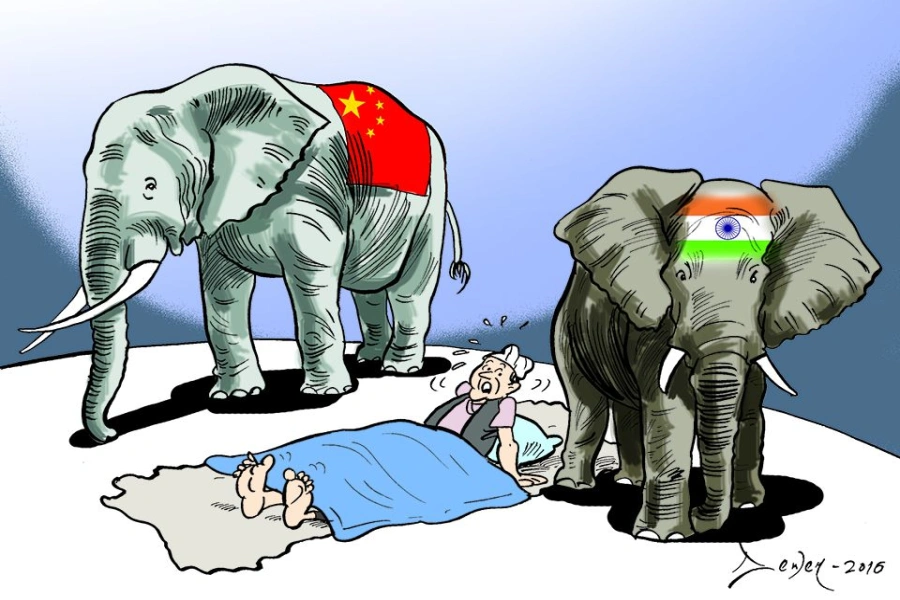What sets a leader apart as an ideal one has been a debated topic among scholars. Leadership researchers ask a series of questions on the various aspects of leadership. Can there be an ideal leadership style that works for all organizations? What is the personal mastery in a leader that stands out as inspirational? A certain leadership trend seems to run in the genes of certain people who are in a leadership position. So what? Does that limit others from becoming great leaders?
Corruption, being a major cause of the downfall of a country and an organization, is a commonly used word in the public sector. But an often forgotten question is: Is the private sector free from corruption? Why does a leader become corrupt? Since leadership development is not a finished project, but an ongoing formation, some of these questions should be explored.
In the book ‘Good to Great’, Jim Collins, a renowned researcher on leadership, introduces the hierarchical ladder of five levels of leadership. Based on the years of research Collins conducted on 500 companies, he identified certain aspects of leadership that played a crucial role in the consistent success of top companies. He cumulated all the qualities that set such great leaders apart from all others under the category of Level Five Leadership.
Though Level Four leaders have tremendous energy, passion, and potential to motivate the employees and be a catalyst in fulfilling the vision of the company, they still don’t seem to reach greater success. On the other hand, Level Five leaders, besides having all the aforementioned qualities, possess higher qualities like admirable “personal humility” and the indomitable “professional will”. Evidently, the Level Four leaders’ hard work and passion are centered on himself/herself whereas the Level Five leaders’ focus is on the organization. This made all the difference in the most successful companies.
Though it cannot be denied that various leadership styles are necessary for different contexts, the quality of the heart and mind of the leader also determines the quality of operations in the office. ‘Self-centered’ leadership is triggered and nurtured by the ego of the person. On the contrary, ‘organization-centered’ leadership is nurtured by personal humility, which helps in preserving and focusing on the transformational journey of the leader.
Kathmandu Road Division Office starts blacktopping road demolis...

Leadership is a journey, and it is very tempting to pitch the tent halfway through it, settling down for mid-level progress. Here are some tips to watch out from being dormant in the leadership journey.
Wohlwill process: From extrinsic to intrinsic
The seed of transcending to becoming a more effective leader lies within. The process of transcending is similar to the Wohlwill process, a chemical procedure which brings out the best of the gold through the process of purification. The inward journey is a tough and slow one but has a reformational impact on the leader.
Gifted and skillful leaders are able to execute their responsibilities efficiently and are able to run the organization successfully. They are capable of making meticulous plans, and the result of their work can be graded with five stars. They may have made sure the duties of all the employees are well distributed and have been powerful in motivating them to a certain extent. And yet it is limited to the skill level of the leader, not the person of the leader.
The transformation of the intrinsic leadership aspect of the person requires him/her to shed the personal burdens of ego and move towards the inner sanctuary of the self. It's the pure inner core of the person that shines out as modest and humble in nature. It’s from there, the self-centered approach and insecurities drop, and the nobility of the heart shines. The purer inner self has the power to heal fears that chain the person to mediocrity and pave the way to humility. Then, it’s not only the leader but also the community under him/her that grows and performs with total satisfaction and immense commitment.
From impulsiveness to self-regulation
Our heartbeat is controlled through the cardiac conduction system, and if the rhythm of the heartbeat is out of control, it stops functioning, and the person dies. The regulation of the heartbeat through electrical activity in the nervous system keeps the person alive. But if the body fails to maintain the rhythm, a pacemaker is placed in the heart to help the body. In any case, the heart must beat regularly and rhythmically. Similarly, self-regulation of the behaviors of the leader is the key to his/her holistic growth. An advanced blend of emotional intelligence and intellectual and managerial competency transforms a leader.
Daniel Goleman, in his book ‘Emotional Intelligence: Why It Can Matter More Than IQ’, proposes five components to strengthen the emotional intelligence of a leader, namely, self-awareness, self-regulation, motivation, empathy, and social skills. Among all these, what stands out in the context of leadership development is self-regulation. Self-awareness has a tendency to remain at the thought level. One can only know if it is true self-awareness if it has helped you behave differently. Conscious behavioral reactions can be identified as the result of self-regulation whereas impulsive reactions are due to the absence of self-regulation.
Checkpoints: What are the emotional reactions during crisis moments? Are the choice of words kind enough to those who hear? Do I blame others for what I am unable to do? Who is leading me? Is it my inner hidden pride and fear or my confident self?
Look in the mirror and out of the window
Collin uses the term ‘look in the mirror and look out of the window’ to distinguish great leaders from good leaders. This is perfect imagery to guide a person to self-awareness when executing the role of leadership. It is often heard leaders dump the blame and hold the employees responsible for the failures, a pattern leading to consistent failures. On the contrary, when something has not gone right, one should have the willingness to look into the mirror (introspection) to see what could have been done differently, and when things go right, look out of the window (see the greatness of others) to identify all those who can be given credit for the success.
This selfless and redeeming approach brings leadership mastery to the person. This can be driven only by extreme humility. However, this does not rule out the process of identifying flaws in the performance of the team and the key players. The process of growth is approached through a 360-degree angle, and all measures should be taken to mend the flaw. And yet the stature of the leader should stand above the routine process of understanding a scenario of success or failure.




































